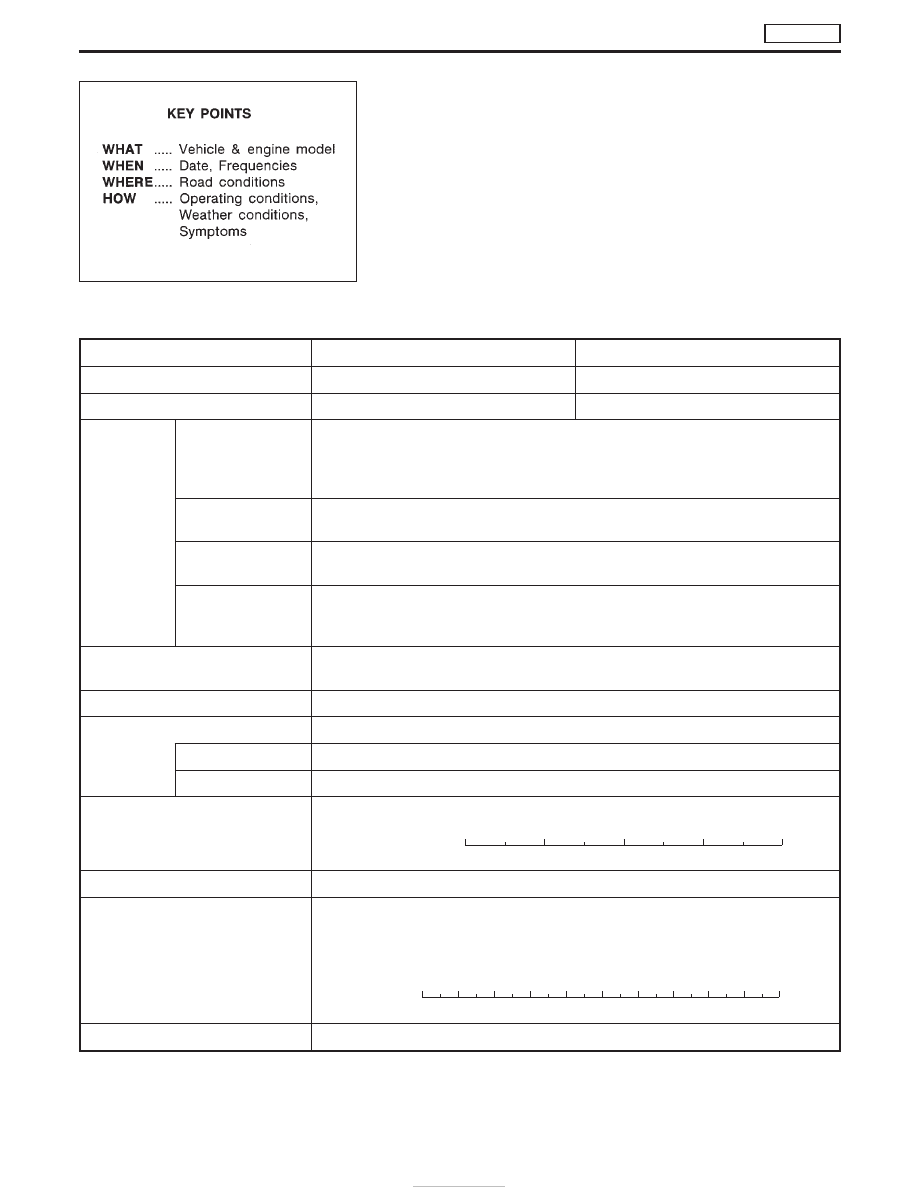Nissan Terrano model r20 series 2004. Manual - part 159

Diagnostic Worksheet
There are many operating conditions that lead to the malfunction
of engine components. A good understanding of such conditions
can make troubleshooting easier and more accurate.
In general, each customer feels differently about a problem. It is
important to fully understand the symptoms or conditions for a
customer complaint.
Utilize a diagnostic worksheet like the one shown below in order to
organize all the information for troubleshooting.
WORKSHEET SAMPLE
Customer name
MR/MS
Model & Year
VIN
Engine #
Trans.
Mileage
Incident Date
Manuf. Date
In Service Date
Symptoms
l
Startability
l
Impossible to start
l
No combustion
l
Partial combustion
l
Partial combustion when warming-up engine
l
Partial combustion when cooling down engine
l
Possible but hard to start
l
Others [
]
l
Idling
l
No fast idle
l
Unstable
l
High idle
l
Low idle
l
Others [
]
l
Driveability
l
Stumble
l
Surge
l
Knock
l
Lack of power
l
Others [
]
l
Engine stall
l
At the time of start
l
While idling
l
While accelerating
l
While decelerating
l
Just after stopping
l
While loading
Incident occurrence
l
Just after delivery
l
Recently
l
In the morning
l
At night
l
In the daytime
Frequency
l
All the time
l
Under certain conditions
l
Sometimes
Weather conditions
l
Not affected
Weather
l
Fine
l
Raining
l
Snowing
l
Others [
]
Temperature
l
Hot
l
Warm
l
Cool
l
Cold
l
Humid
°F
Engine conditions
l
Cold
l
During warm-up
l
After warm-up
Engine speed
0
2,000
4,000
6,000
8,000 rpm
Road conditions
l
In town
l
In suburbs
l
Highway
l
Off road (up/down)
Driving conditions
l
Not affected
l
At starting
l
While idling
l
At racing
l
While accelerating
l
While cruising
l
While decelerating
l
While turning (RH/LH)
Vehicle speed
0
10
20
30
40
50
60
70
80
90
100 mph
Malfunction indicator lamp
l
Turned on
l
Not turned on
SEF907L
TROUBLE DIAGNOSES
TD27Ti
EC-358